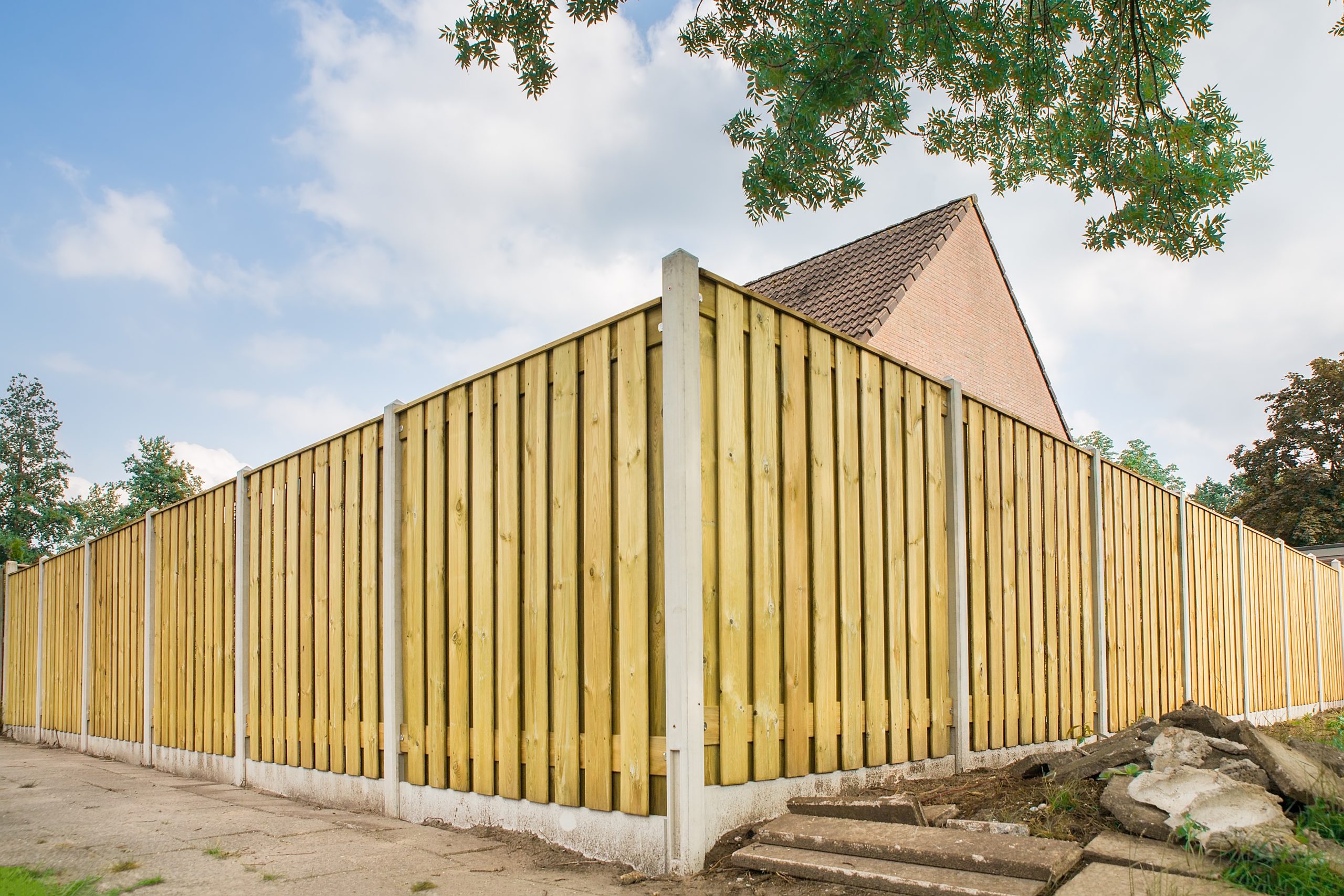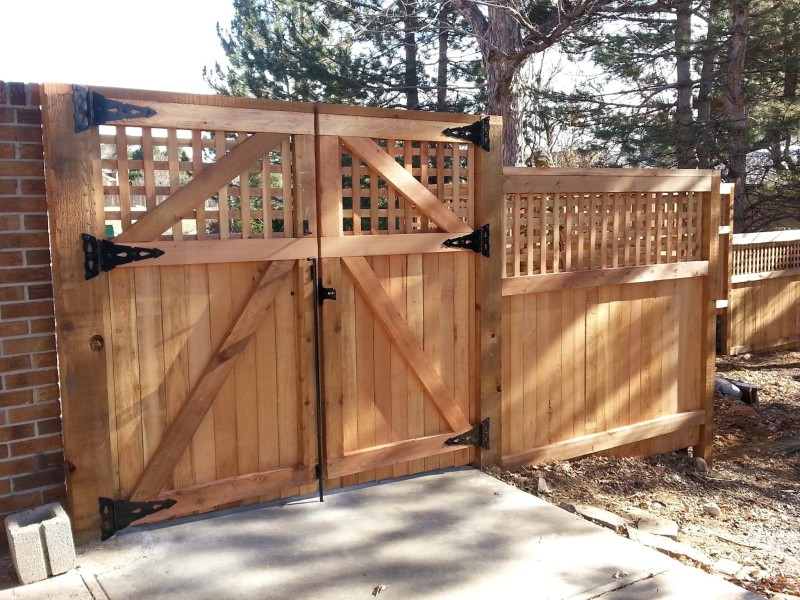All Categories
Featured
As sustainability becomes a significantly vital element in home and commercial building style, the demand for green items continues to rise. This includes products for outside spaces, especially for fences. While conventional secure fencing alternatives like vinyl, metal, and wood can have significant environmental downsides, there are a number of sustainable and green choices available. Picking ecologically responsible fencing materials assists lower your carbon footprint and supports preservation initiatives. Let's explore a few of the ideal environmentally friendly fencing alternatives that advertise sustainability while additionally using resilience and style.
Perks: Bamboo calls for marginal water, pesticides, and plant foods to expand. It is biodegradable, lowering waste at the end of its life process. It is immune and likewise durable to rot, ensuring long life with correct treatment. Considerations: Bamboo may not be optimal for areas with rough wintertimes or severe cold, as it can become breakable and crack in freezing temperature levels. 2. Recycled Materials Fence. Fencings made from recycled products, such as post-consumer plastics, recovered timber, or recycled steel, are becoming significantly popular in eco-conscious designs. These materials minimize waste, preserve sources, and reduce the need for the removal of raw products, which is advantageous for the setting. By repurposing existing materials, you add to decreasing the demand for brand-new, energy-intensive production procedures.
Benefits: Making use of recycled materials aids divert waste from landfills, decreases environmental effect, and can lower your carbon footprint. It is likewise a cost-efficient service in some instances. Factors to consider: The visual of recycled product fencings can differ, and some might not attain the very same all-natural appearance as typical wood fences. Lots of manufacturers now supply designs that replicate the appearance of wood or rock. 3. Composite Secure fencing. Compound secure fencing is made from a blend of wood fibers and plastic, commonly sourced from recycled content. This kind of fence supplies the appearance of wood with very little maintenance, while also being eco-friendly. Composite materials are resistant and usually durable to the components, minimizing the need for frequent substitute or therapy with chemicals.
![]()
Conveniences: Composite fences are durable, low-maintenance, and can be made from recycled material, helping in reducing waste. They do not call for damaging chemicals for conservation, unlike treated timber. Factors to consider: While composite fencing is sturdy, it has a tendency to be more pricey ahead of time compared to standard timber. Its longevity and reduced maintenance may make it a more cost-efficient option over time. 4. Cedar and Redwood Fencing. Cedar and redwood are prominent choices for environmentally-conscious fence, as both materials are naturally sturdy, resistant to degeneration, and need very little chemical therapies. These timbers can be sustainably harvested from sensibly taken care of woodlands, guaranteeing their environmentally friendly condition. They also have a natural charm that numerous property owners appreciate, with rich colors and structures that improve curb allure.
Benefits: Cedar and redwood fencings are lasting, normally pest-resistant, and have a low ecological influence when harvested sustainably. They also have a classic visual and can mix flawlessly right into all-natural landscapes. Factors to consider: While cedar and redwood are extra green than various other sorts of timber, they are still timber products and need correct upkeep to stop decay. The expense might additionally be higher contrasted to various other materials. 5. Living Fences (Hedges and Bushes) For those seeking an extra all-natural and eco-friendly choice, living fences, or hedges, are an outstanding choice. These are commonly developed by planting dense bushes, trees, or climbing up plants to develop an all-natural barrier. Popular options for living fencings consist of boxwood, bamboo, and privet. These plants not only give privacy yet additionally take in carbon dioxide, help with dirt erosion, and assistance regional wild animals.
Perks: Living fences boost air quality, contribute to biodiversity, and offer a natural appearance that mixes effortlessly with the landscape. They additionally reduce sound pollution and help manage temperature levels in your lawn. Considerations: Living fences call for normal maintenance, such as pruning and watering, and might not be appropriate for every environment. They also need time to develop prior to they can offer complete personal privacy. 6. Stone and Block Fence (Reclaimed) Rock and block are unbelievably durable products, and utilizing recovered stone or brick can be an environment-friendly method to construct a fence. By recycling these materials from old structures or structures, you lower the demand for new sources and minimize waste. Stone and block fences are strong, call for little upkeep, and supply a timeless seek to any kind of residential or commercial property.
![]()
Benefits: Reclaimed stone and brick fences are extremely durable, low-maintenance, and supply superb privacy and protection. They are also energy-efficient, as they assist control temperature by serving as natural insulators. Factors to consider: Installment of stone and block fences can be much more labor-intensive and costly than other materials. Additionally, these fences may not appropriate for all properties because of the weight and the need for appropriate setup. Final thought. Bamboo, recycled materials, composite secure fencing, and cedar or redwood all offer lasting options to traditional materials. By picking one of these lasting secure fencing products, you're making a favorable influence on the setting while creating a stunning and functional outdoor location.
- Bamboo Fencing. Bamboo is among one of the most eco-friendly products offered for secure fencing. As one of the fastest-growing plants in the globe, bamboo is incredibly renewable, able to grow back swiftly after being gathered. Unlike hardwood trees, which can take years to grow, bamboo reaches complete growth in just a couple of years, making it a suitable lasting choice. Bamboo fences are strong, naturally immune to bugs, and offer a lovely, natural visual.
Perks: Bamboo calls for marginal water, pesticides, and plant foods to expand. It is biodegradable, lowering waste at the end of its life process. It is immune and likewise durable to rot, ensuring long life with correct treatment. Considerations: Bamboo may not be optimal for areas with rough wintertimes or severe cold, as it can become breakable and crack in freezing temperature levels. 2. Recycled Materials Fence. Fencings made from recycled products, such as post-consumer plastics, recovered timber, or recycled steel, are becoming significantly popular in eco-conscious designs. These materials minimize waste, preserve sources, and reduce the need for the removal of raw products, which is advantageous for the setting. By repurposing existing materials, you add to decreasing the demand for brand-new, energy-intensive production procedures.
Benefits: Making use of recycled materials aids divert waste from landfills, decreases environmental effect, and can lower your carbon footprint. It is likewise a cost-efficient service in some instances. Factors to consider: The visual of recycled product fencings can differ, and some might not attain the very same all-natural appearance as typical wood fences. Lots of manufacturers now supply designs that replicate the appearance of wood or rock. 3. Composite Secure fencing. Compound secure fencing is made from a blend of wood fibers and plastic, commonly sourced from recycled content. This kind of fence supplies the appearance of wood with very little maintenance, while also being eco-friendly. Composite materials are resistant and usually durable to the components, minimizing the need for frequent substitute or therapy with chemicals.

Conveniences: Composite fences are durable, low-maintenance, and can be made from recycled material, helping in reducing waste. They do not call for damaging chemicals for conservation, unlike treated timber. Factors to consider: While composite fencing is sturdy, it has a tendency to be more pricey ahead of time compared to standard timber. Its longevity and reduced maintenance may make it a more cost-efficient option over time. 4. Cedar and Redwood Fencing. Cedar and redwood are prominent choices for environmentally-conscious fence, as both materials are naturally sturdy, resistant to degeneration, and need very little chemical therapies. These timbers can be sustainably harvested from sensibly taken care of woodlands, guaranteeing their environmentally friendly condition. They also have a natural charm that numerous property owners appreciate, with rich colors and structures that improve curb allure.
Benefits: Cedar and redwood fencings are lasting, normally pest-resistant, and have a low ecological influence when harvested sustainably. They also have a classic visual and can mix flawlessly right into all-natural landscapes. Factors to consider: While cedar and redwood are extra green than various other sorts of timber, they are still timber products and need correct upkeep to stop decay. The expense might additionally be higher contrasted to various other materials. 5. Living Fences (Hedges and Bushes) For those seeking an extra all-natural and eco-friendly choice, living fences, or hedges, are an outstanding choice. These are commonly developed by planting dense bushes, trees, or climbing up plants to develop an all-natural barrier. Popular options for living fencings consist of boxwood, bamboo, and privet. These plants not only give privacy yet additionally take in carbon dioxide, help with dirt erosion, and assistance regional wild animals.
Perks: Living fences boost air quality, contribute to biodiversity, and offer a natural appearance that mixes effortlessly with the landscape. They additionally reduce sound pollution and help manage temperature levels in your lawn. Considerations: Living fences call for normal maintenance, such as pruning and watering, and might not be appropriate for every environment. They also need time to develop prior to they can offer complete personal privacy. 6. Stone and Block Fence (Reclaimed) Rock and block are unbelievably durable products, and utilizing recovered stone or brick can be an environment-friendly method to construct a fence. By recycling these materials from old structures or structures, you lower the demand for new sources and minimize waste. Stone and block fences are strong, call for little upkeep, and supply a timeless seek to any kind of residential or commercial property.

Benefits: Reclaimed stone and brick fences are extremely durable, low-maintenance, and supply superb privacy and protection. They are also energy-efficient, as they assist control temperature by serving as natural insulators. Factors to consider: Installment of stone and block fences can be much more labor-intensive and costly than other materials. Additionally, these fences may not appropriate for all properties because of the weight and the need for appropriate setup. Final thought. Bamboo, recycled materials, composite secure fencing, and cedar or redwood all offer lasting options to traditional materials. By picking one of these lasting secure fencing products, you're making a favorable influence on the setting while creating a stunning and functional outdoor location.
Latest Posts
Recognizing When Your Car Needs Skilled Auto Repair at Montclare Auto Repair
Published May 24, 25
1 min read
Learn About Exceptional Auto Repair Services in Chicago – Expert Care for Your Vehicle
Published May 23, 25
1 min read
Boost Your Home's Exterior with Weathercraft's Exterior siding Solutions
Published May 22, 25
1 min read
More
Latest Posts
Recognizing When Your Car Needs Skilled Auto Repair at Montclare Auto Repair
Published May 24, 25
1 min read
Learn About Exceptional Auto Repair Services in Chicago – Expert Care for Your Vehicle
Published May 23, 25
1 min read
Boost Your Home's Exterior with Weathercraft's Exterior siding Solutions
Published May 22, 25
1 min read